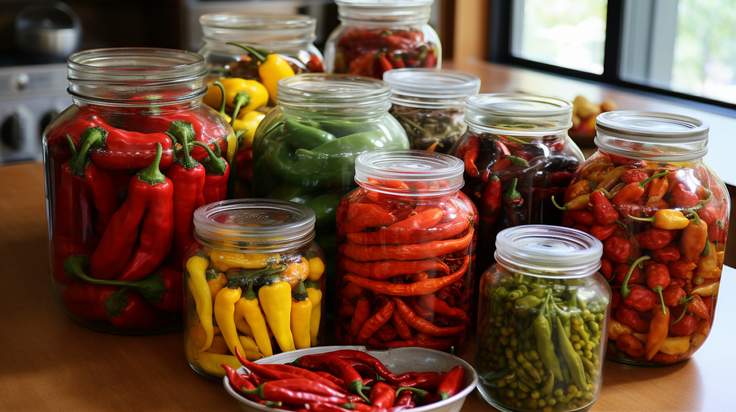Best Practices for Storing and Preserving Peppers

In the culinary world, peppers are indispensable, imparting flavor, heat, and color to countless dishes. From the mild bell pepper to the fiery ghost pepper, there is a vast array of peppers to cater to every palate. Proper storing and preservation of peppers are crucial for maintaining their taste and nutritional value. This article sheds light on the essential practices to store and preserve peppers effectively, which is vital for individuals seeking optimal pepper quality.
Types of Peppers: A Brief Overview
Peppers fall under two main categories: sweet and hot. Sweet peppers include bell and banana peppers, while hot peppers encompass jalapeños, habaneros, and cayenne peppers, among others. Regardless of the type, all peppers can benefit from suitable storage and preservation techniques.
Storing Fresh Peppers
1. Refrigeration:
Fresh peppers retain their quality when stored in the vegetable crisper drawer of the refrigerator. They prefer a cool, humid environment, so placing them in produce bags can maintain humidity levels, ensuring longevity and freshness.
2. Freezing:
Peppers can be frozen to extend their shelf life. Before freezing, clean, and slice them, removing seeds and membranes. Flash-freezing on a tray before packing them in airtight bags prevents them from clumping together.
Preservation Methods for Long-term Storage
1. Drying:
Drying is a popular method of preserving peppers. By removing moisture, the growth of mold and bacteria is inhibited. Air-drying, oven-drying, and using a dehydrator are all effective methods. Dried peppers can be ground into powder or rehydrated before use.
2. Canning:
Canning is another robust method to preserve peppers. Pickling peppers in a vinegar solution and processing them in a boiling water bath can extend their shelf life significantly. This method is suitable for both hot and sweet peppers.
3. Fermenting:
Fermentation is a time-honored technique for pepper preservation. Lacto-fermentation enhances the flavor profile of peppers and introduces beneficial bacteria, contributing to a healthy gut.
4. Vacuum Sealing:
Vacuum sealing removes air from the storage bag, reducing oxidation and spoilage, thus prolonging the shelf life of fresh, dried, or roasted peppers.
Online Resources and Supplies for Pepper Preservation
Various online resources offer detailed guidance on the storing and preservation of peppers. Websites specializing in culinary techniques and food preservation, like Food Preservation Pro and The Spicy Foodie, provide valuable insights and tutorials. Additionally, online marketplaces like Amazon and Walmart offer a range of preservation supplies, including canning jars, vacuum sealers, and dehydrators.
Maximizing the Shelf Life of Peppers
Understanding the intricacies of storing and preserving peppers is fundamental for anyone looking to enjoy them throughout the year. By employing methods like refrigeration, freezing, drying, canning, fermenting, and vacuum sealing, peppers can be stored effectively, maintaining their flavor, nutritional value, and heat.
While the internet is a rich source of information on pepper storage and preservation, experimenting with different techniques can help you discover which method aligns best with your culinary preferences. Whether you’re a spicy food aficionado or a sweet pepper enthusiast, mastering the art of pepper preservation can elevate your culinary creations and reduce food waste, thereby contributing to a more sustainable and flavorful food experience.